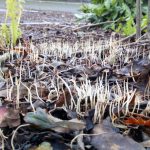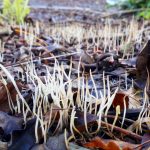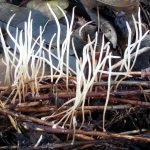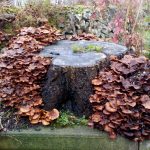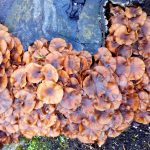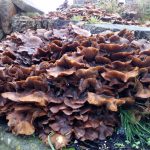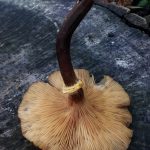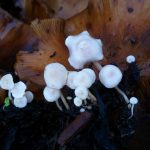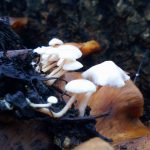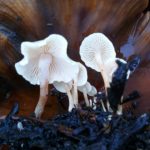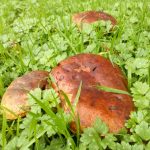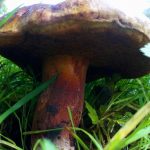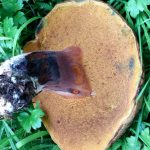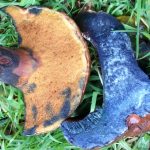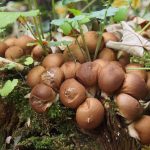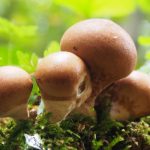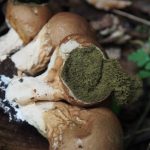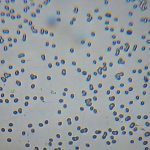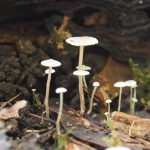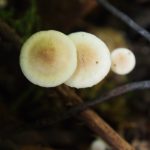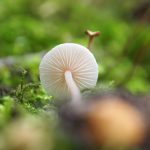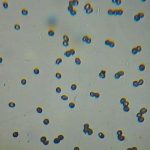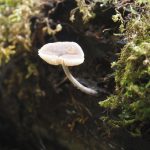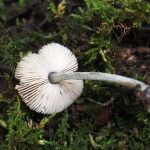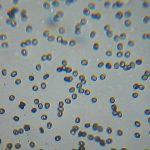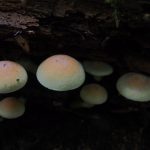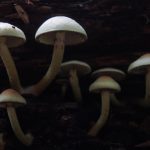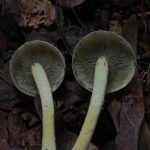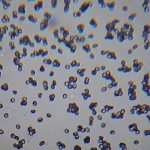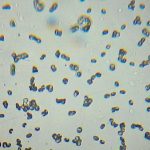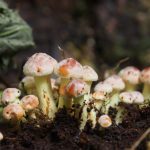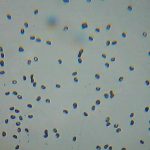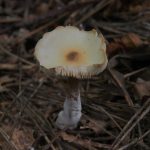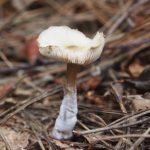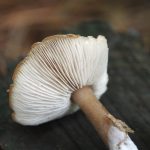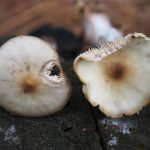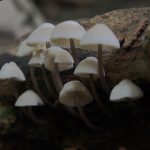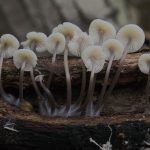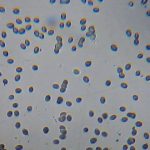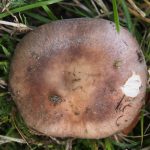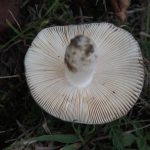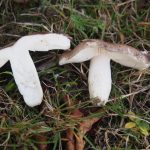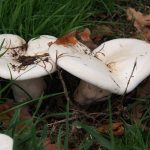I didn’t do any serious fungus searching on holiday in County Cork this time, but some of the mushrooms I saw around and about were impossible to ignore. I took the pictures on my new phone camera and they’re ok, although the focussing wasn’t as successful as I expected. I didn’t do any investigation on how this particular camera works so I might have been able to do it better. I was expecting the small aperture to make focussing trivially easy but it didn’t seem to be that way.
Anyway, the first find was in Kinsale in a damp roadside flower border: A very strange sight which I wasn’t even sure was a fungus at first – hundreds of Slender Club filaments poking up through the leaf litter, which turned out to be attached to the twigs underneath.
The second find was an impressive stand of Honey Fungus. There was a lot of it about. Walking around the grounds of Blarney castle there were many clumps of honey fungus. I noticed that the recent thinking on this species is that it’s poisonous if eaten regularly. Before that information I did eat some a few years ago, and it was ok, but not really worth bothering with anyway! On the same stump there were also some Goblet Parachutes.
The other find was some Scarletina Boletes growing in the grounds of Blarney Castle. My id on this is very tentative as they are rather unlike my other find of this species. (I suspect that other find was wrongly identified rather than this one – I might go back and reconsider it.) It is very striking how quickly the flesh turns almost black as soon as they’re handled or cut. This year Blarney Castle didn’t have as many mushrooms as I was expecting, and this was the best of the bunch.

